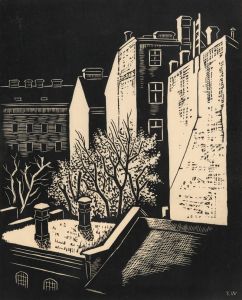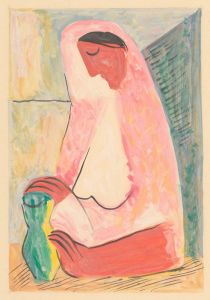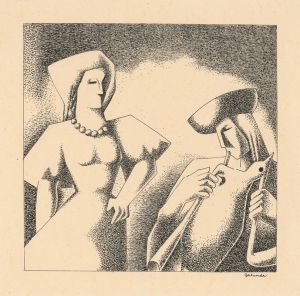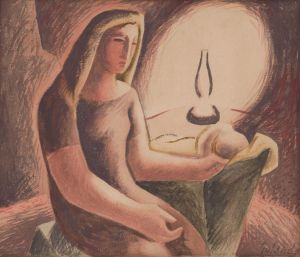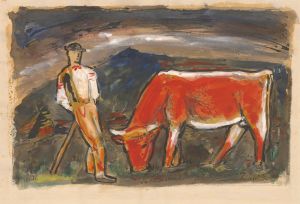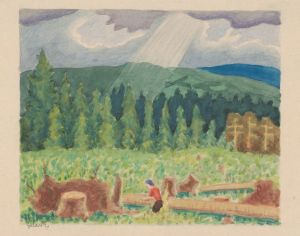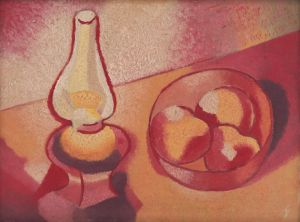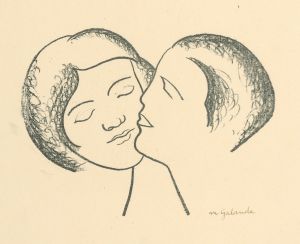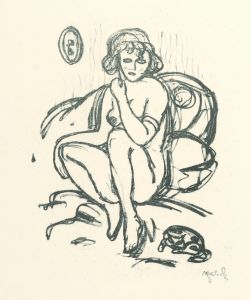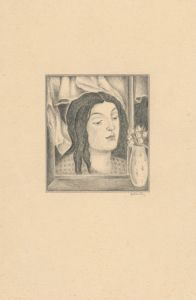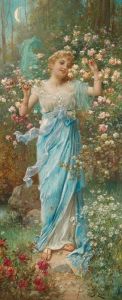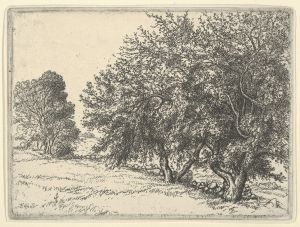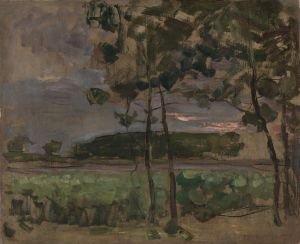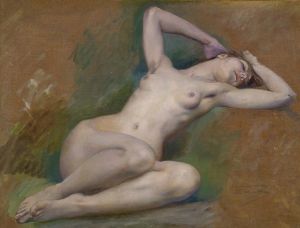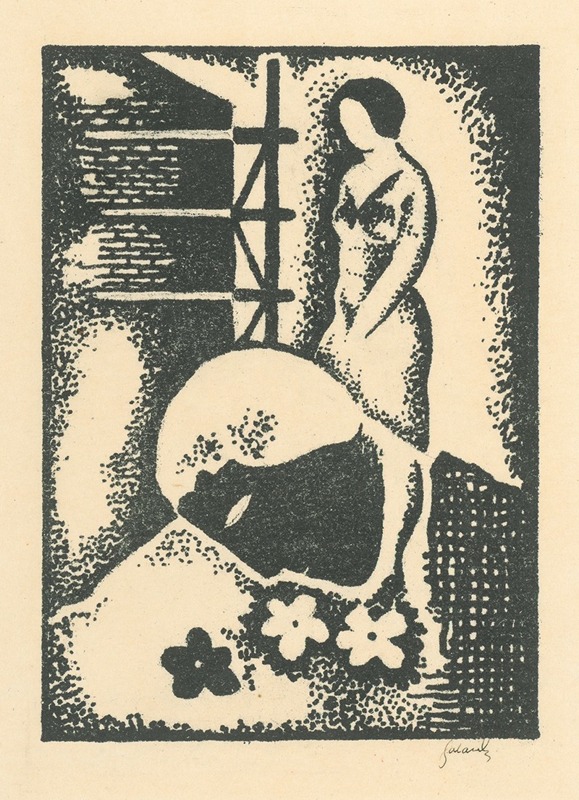
Jaro
A hand-painted replica of Mikuláš Galanda’s masterpiece Jaro, meticulously crafted by professional artists to capture the true essence of the original. Each piece is created with museum-quality canvas and rare mineral pigments, carefully painted by experienced artists with delicate brushstrokes and rich, layered colors to perfectly recreate the texture of the original artwork. Unlike machine-printed reproductions, this hand-painted version brings the painting to life, infused with the artist’s emotions and skill in every stroke. Whether for personal collection or home decoration, it instantly elevates the artistic atmosphere of any space.
Mikuláš Galanda was a prominent Slovak painter, illustrator, and graphic artist, known for his significant contributions to modern Slovak art in the early 20th century. Born on May 4, 1895, in Turčianske Teplice, Slovakia, Galanda was a key figure in the development of Slovak modernism and played an influential role in the cultural and artistic movements of his time. His works are characterized by their innovative use of color, form, and composition, often reflecting the socio-political context of the era.
One of Galanda's notable works is the painting "Jaro," which translates to "Spring" in English. This painting is a quintessential example of Galanda's style, which blends elements of modernism with traditional Slovak themes. "Jaro" captures the essence of spring through its vibrant colors and dynamic composition, reflecting the renewal and vitality associated with the season.
Galanda's approach to art was heavily influenced by his education and experiences. He studied at the Academy of Fine Arts in Budapest and later at the Academy of Fine Arts in Prague, where he was exposed to various artistic styles and movements. This diverse education allowed him to develop a unique style that combined elements of cubism, expressionism, and folk art. His work often features simplified forms and bold colors, which are evident in "Jaro."
The painting "Jaro" is celebrated for its depiction of rural Slovak life, a common theme in Galanda's work. He often drew inspiration from the Slovak countryside, capturing the landscapes, people, and traditions of his homeland. In "Jaro," Galanda uses a vibrant color palette to convey the energy and freshness of spring. The composition is dynamic, with a sense of movement that reflects the awakening of nature after winter.
Galanda was also a member of the "Generation of 1909," a group of Slovak artists who sought to modernize Slovak art and culture. This group was instrumental in introducing modernist ideas to Slovakia and played a crucial role in the development of Slovak national identity through art. Galanda's work, including "Jaro," reflects this mission by blending modernist techniques with traditional Slovak themes.
Throughout his career, Galanda faced numerous challenges, including political and social upheavals. Despite these difficulties, he remained committed to his artistic vision and continued to produce works that were both innovative and deeply rooted in Slovak culture. His contributions to Slovak art were recognized during his lifetime, and he remains an influential figure in Slovak art history.
Mikuláš Galanda passed away on June 5, 1938, but his legacy lives on through his art. "Jaro" is a testament to his skill as a painter and his ability to capture the spirit of his homeland. Today, his works are held in high regard and can be found in various Slovak galleries and collections, where they continue to inspire new generations of artists and art enthusiasts.





